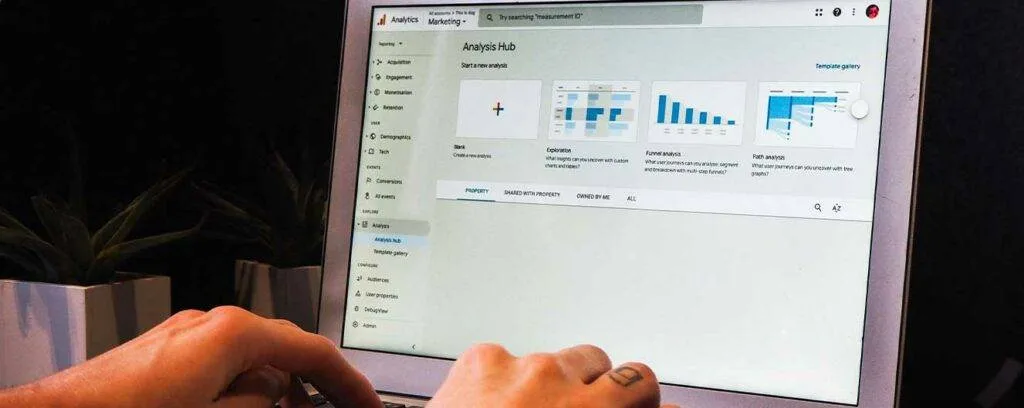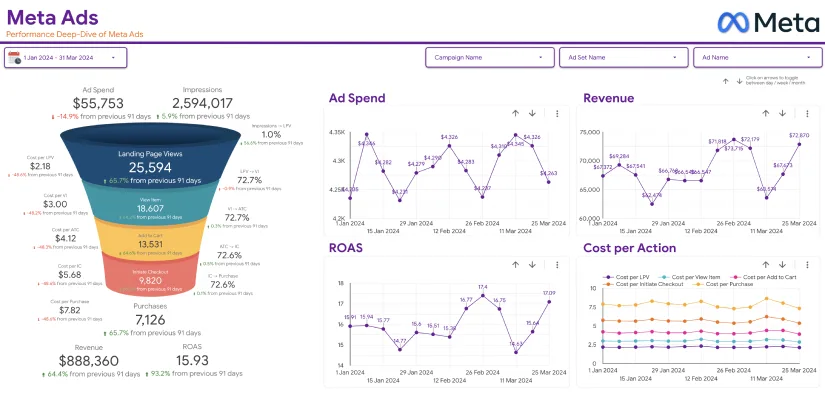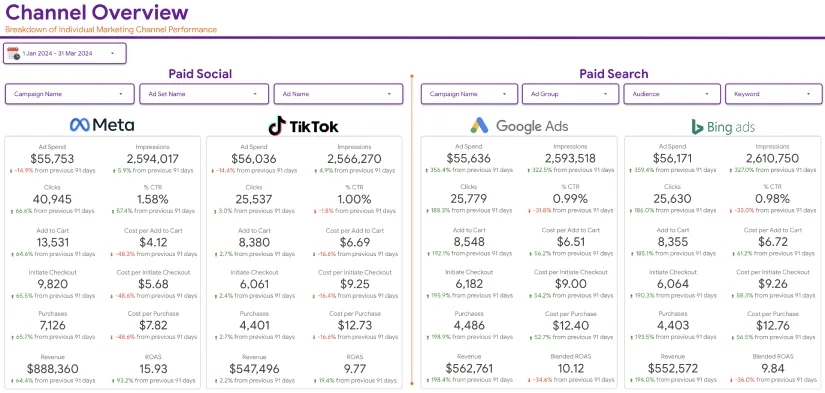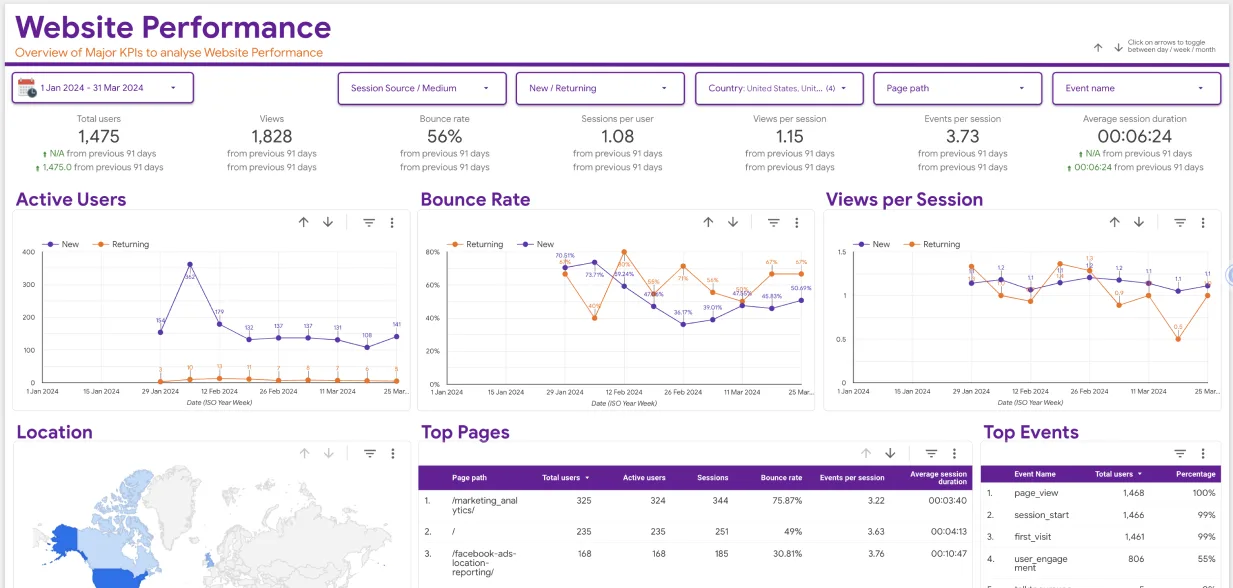In today’s fast-paced digital landscape, businesses must be more strategic than ever about guiding prospects through the sales funnel. Understanding each customer journey stage can make or break your marketing efforts. That’s where a funnel dashboard comes into play.
With a well-designed funnel dashboard, you can track every step of the customer journey, from the first interaction to conversion. This boosts your conversion rates and enhances the overall customer experience. In this blog, we’ll explore how tracking each sales funnel stage using a funnel dashboard can significantly improve business performance.
What is a Funnel Dashboard?
A funnel dashboard is a visual tool that helps businesses track, analyze, and optimize each customer journey stage. It provides real-time insights into how prospects are moving through the funnel—whether it’s the awareness, consideration, or decision stage. By monitoring this journey, you can identify where potential customers drop off and take immediate action to address those gaps.
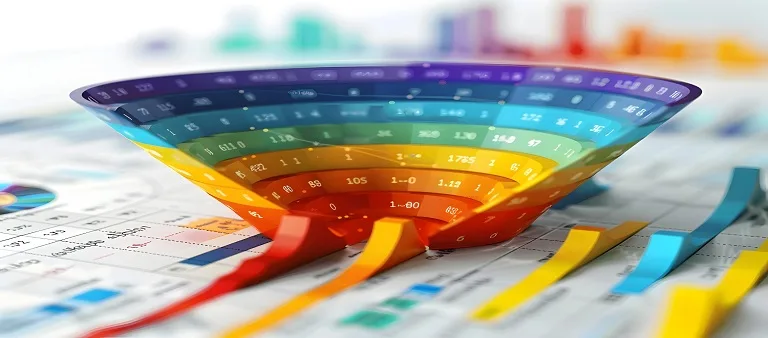
Why Tracking Each Stage of the Funnel Matters
Tracking each stage of the funnel allows you to pinpoint what’s working and what’s not. Whether it’s a lack of engagement at the top or slow conversions at the bottom, your funnel dashboard can provide the data you need to make data-driven decisions.
1. Top of the Funnel (Awareness Stage)
At the top of the funnel, potential customers are just learning about your brand. Here, metrics like website visits, social media engagement, and content interactions are crucial. A funnel dashboard helps you see which channels drive the most traffic and which need improvement.
Example: If your dashboard shows high bounce rates from certain blog posts, you can tweak the content to be more engaging or optimize the call-to-action to guide users deeper into the funnel.
2. Middle of the Funnel (Consideration Stage)
In the middle of the funnel, prospects evaluate their options. They might compare your product or service with competitors. This is where nurturing is key. A funnel dashboard can track email open rates, webinar attendance, and free trial sign-ups.
Example: If the dashboard indicates that many leads are abandoning their cart, it could be a sign that your pricing page or checkout process needs simplification. By addressing this pain point, you can push more prospects toward conversion.
3. Bottom of the Funnel (Decision Stage)
The decision stage is where leads turn into paying customers, and conversion rates are most critical. A funnel dashboard allows you to monitor close rates, sales conversations, and post-purchase engagement, ensuring your team stays on top of closing deals.
Example: If the dashboard highlights that most customers convert after a follow-up call, you can ensure your sales team prioritizes this action, improving overall conversion rates.
How Funnel Dashboards Improve Conversion Rates
1. Real-Time Insights Lead to Timely Actions
A funnel dashboard offers real-time data, allowing your team to respond instantly to any trends or issues. If you notice a sudden drop in engagement at a particular stage, you can take immediate action, whether it’s by tweaking your messaging or running a targeted campaign. This agility can make all the difference in improving conversion rates.

2. Better Alignment Between Marketing and Sales
One of the biggest challenges in business is ensuring that marketing and sales are on the same page. A funnel dashboard fosters better alignment by providing a single source of truth. Both teams can use the same data to make decisions, ensuring marketing delivers qualified leads and sales close deals effectively.
3. Optimization at Every Stage of the Funnel
With a funnel dashboard, you can continuously optimize every part of the funnel. If you notice a high drop-off at the middle of the funnel, it might indicate that your prospects need more nurturing content. On the other hand, a strong top-of-funnel performance but weak bottom-of-funnel conversions signal that your sales team needs more training or better support tools.
4. Enhanced Customer Experience
Tracking the entire customer journey doesn’t just improve conversions—it also leads to a better customer experience. By understanding how prospects engage with your brand, you can tailor your messaging and offers to meet their specific needs at each stage of the funnel. The result? Happier customers who are more likely to convert and remain loyal to your brand.
Conclusion: Funnel Dashboards Are Essential for Business Growth
At Eaglytics Co., tracking the customer journey through a well-optimized funnel dashboard is crucial for boosting conversion rates. It provides real-time insights, fosters better alignment between marketing and sales, and helps you optimize each stage of the funnel for maximum impact. By leveraging this powerful tool, businesses can drive more leads, improve customer satisfaction, and ultimately, grow revenue.
Whether you’re a small business looking to scale or an established company aiming to improve conversion rates, investing in a funnel dashboard is necessary. The right insights at the right time can make all the difference in turning leads into loyal customers. Ready to take your customer journey tracking to the next level? Contact Eaglytics Co. today to learn how we can help you set up a high-performing funnel dashboard that delivers results.
By incorporating these strategies into your customer journey tracking, your business will be well on its way to more conversions, a stronger customer experience, and sustainable growth.



